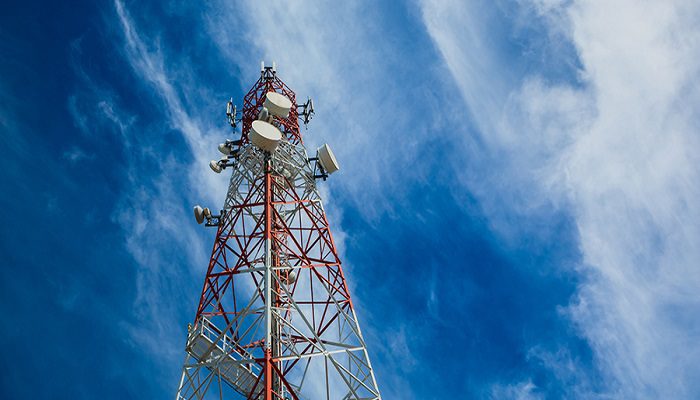The significance of dependable and resilient telecommunications infrastructure cannot be overstated in the age of climate change when disasters, both natural and manmade, are becoming a problem of growing urgency. Connectivity plays a crucial role in times of crisis, enabling effective communication and coordination among individuals, organizations and governments – before, during and after an emergency.
This article explores the significance of connectivity during emergencies, from the impact of disasters on communication networks and the vulnerabilities of critical infrastructure to the potential of decentralized wireless technologies in relief efforts and the lessons learned for enhancing resilience in the face of future crises.
The Importance of Connectivity in Times of Crisis
During times of crisis, such as natural disasters, terrorist attacks, or pandemics, the ability to communicate quickly and effectively is essential. Telecommunications networks enable emergency responders to coordinate their efforts, provide critical information to affected populations and facilitate the delivery of aid and support. Without reliable connectivity, response efforts can be severely hindered, leading to delays in assistance and increased vulnerability for affected communities.
Moreover, connectivity is crucial for individuals to reach out to their loved ones, seek help and access vital information. In times of crisis, people rely on their smartphones, internet connections and other communication devices to stay informed and connected. The availability of reliable telecommunications services can make a significant difference in saving lives and minimizing the impact of emergencies.
Telecommunications engineering specialists can be better prepared to help affected communities by enhancing their ability to design, develop and maintain efficient and reliable telecommunications systems by enrolling in a part time code bootcamp, or immersive software engineering program to develop and hone cutting-edge software engineering skills that could prove invaluable in times of crisis.
Disasters That Impact Communications Systems
Power supply vulnerabilities and compromised infrastructure are critical factors that can impact the resiliency of communication networks. Natural disasters, such as hurricanes, earthquakes, floods and wildfires, can cause severe damage to communication infrastructure.
High winds, flooding and power outages can disrupt the functioning of cell towers, data centers and other critical components of telecommunications networks. In some cases, like the recent devastating wildfire in Lahaina, entire communities may be left without any means of communication, exacerbating the challenges faced during emergencies.
Manmade disasters, including cyberattacks and physical attacks on communication infrastructure such as fiber optic cables or transmission towers, also pose significant threats to connectivity. Cyberattacks can disrupt networks, compromise data security and render communication systems inoperable. Physical attacks, such as bombings or sabotage, can cause extensive damage to infrastructure, leading to prolonged outages and communication blackouts.
Revolutionizing Relief: Wireless Technologies and Communication Solutions
In recent years, there has been a growing interest in decentralized wireless technologies and infrastructure-less communication solutions. These innovative approaches aim to provide connectivity in areas with limited or damaged infrastructure, enabling communication even in the absence of traditional networks.
Decentralized wireless technologies, such as mesh networks, allow devices to connect directly with each other, creating a self-sustaining network without relying on centralized infrastructure. This can be particularly useful in remote or disaster-stricken areas where traditional communication infrastructure is unavailable or unreliable.
Infrastructure-less communication solutions, such as satellite-based systems or balloon-powered networks, offer alternative means of connectivity in areas where terrestrial networks are disrupted or destroyed. These solutions can be rapidly deployed and provide temporary communication capabilities during emergencies.
Lessons Learned: Enhancing Resilience for Future Crises
The challenges faced during past crises have provided valuable lessons for enhancing the resiliency of telecommunications systems in the face of future emergencies. Communities must invest in robust and redundant infrastructure, including backup power systems and diverse network routes, to minimize the impact of power outages and physical damage.
Collaboration between telecommunication companies, emergency responders and government agencies is also essential for effective crisis management. Regular drills, simulations and information sharing can help identify vulnerabilities, improve response capabilities and ensure a coordinated approach to communication during emergencies.
Furthermore, public awareness and education about the importance of connectivity during emergencies can empower individuals to take proactive measures to stay connected. This includes having backup power sources, storing emergency contact information and being aware of alternative communication options in case of network disruptions.
In conclusion, telecommunications systems play a vital role in the age of climate change, enabling effective communication and coordination during emergencies. The impact of natural and manmade disasters on communication networks highlights the need for resilient infrastructure and power supply. The potential of decentralized wireless technologies and infrastructure-less communication solutions offers promising alternatives for connectivity in crises. By learning from past experiences and enhancing resilience, we can ensure that telecommunications systems continue to serve as lifelines during future crises.




















